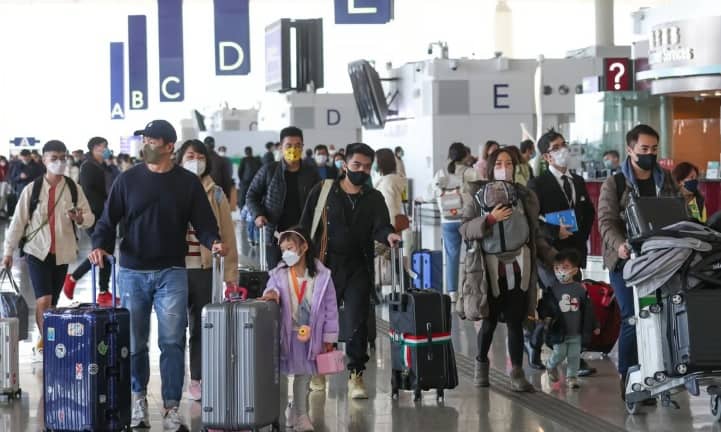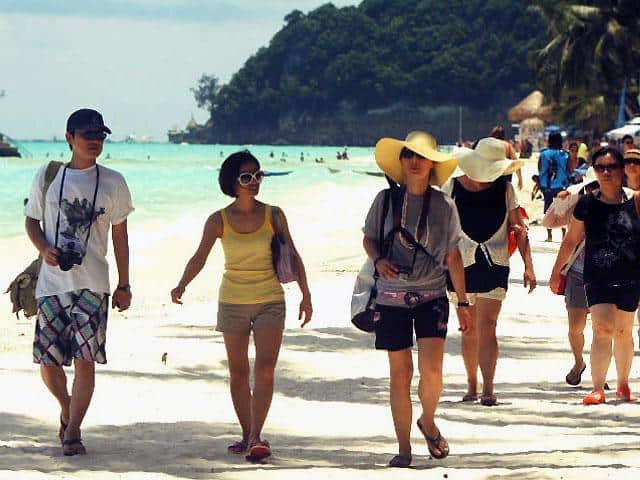Chinese Will Travel to South Asia in 2023
Tourism revenues fell and have not bounced back in South Asia because of lack of Chinese tourists,but in 2023, it will change totally.
South Asia complicated Tourism Situation
Together with total exports, tourism revenues fell in 2020. We are still waiting on data from the World Bank for 2021. However, it is likely that this situation didn’t improve much before this year. This improvement in tourism revenue would be very welcome in Asia. The Russian invasion of Ukraine, and subsequent spikes energy prices, have had a negative impact on the current accounts in the region.
This surge in energy prices has eroded the external balances of a region that has had large, steady current account surpluses for many years and has large foreign exchange reserves. Some economies are now facing their first deficits since 1997, before the Asian financial crisis. In addition, FX reserves have been affected by central bank intervention to limit currency depreciation.
While it won’t completely eliminate the effects of this large terms of trade shift and the current strength US dollar, additional tourism revenues could at least ease the pain.
New Tourism Regulation in China
China’s Ministry of Foreign Affairs (MFA), announced Tuesday that nucleic acid testing will cease to be performed on anyone entering the country beginning January 8, 2023. Those with normal health declarations and no abnormal customs quarantine will not have to undergo any special processes.

The MFA issued a notice of interim measures to facilitate personnel exchanges between China, foreign countries on Tuesday. It stated that those who have not reported any issues in their health declaration and have had regular customs inspections and quarantine clearances can enter China without having to be quarantined.
NEWS Antigen testing will be performed at the customs for those who have fever or other symptoms. Travelers who are positive for the virus may be asked to self-quarantine at their home or place of residence if they feel they have not been ill.
You should seek medical attention for any other type of case. All those who are negative for a test must undergo regular customs inspection and quarantine clearance according to the Frontier Health and Quarantine Law and any other laws and regulations in China.
The notice stated that China will gradually resume passenger and commercial transportation at land ports. This was based on a comprehensive assessment.
Great News for Asian Tourism Countries
A pilot program will be implemented for international cruise ships to make it easier for Chinese and other sailors to switch shifts in China.
The ministry will also optimize arrangements for foreigners returning from China for business, study, work, reunions, or work resumption. Visa facilities will be provided accordingly.
The notice stated that China will resume outbound tourist for Chinese citizens following the principles of pilot programs in light of the current international epidemic and the support capacity of all sector sectors.
It stated that all people who travel to China must undergo a nucleic acids test at least 48 hours prior to departure. Negative test results will not be accepted for entry to China. A health code can be obtained from consular and diplomatic missions in China. Passengers who are positive for the test should wait until they have returned a negative result before travelling to China.

These provisional measures for cross-border travel were developed in accordance with the new 20 measures, 10 new measures, and the recent decision to downgrade COVID-19 management to Class-B. They are current and consistent with domestic COVID measures. Wang stated that this will allow for better coordination of COVID responses with economic and sociological development and facilitate cross-border travel.
Monday’s notice by the National Health Commission addressed the downgrading of Class A management of COVID-19 from January 8, 2023 to Class B. This was done to improve the management of personnel transfers between China and other countries.
Trip data showed that searches for popular destinations overseas jumped tenfold within a half hour of the notice’s launch. Additionally, searches for outbound flights and hotels reached three-year highs.
Tongcheng Travel platform data also showed that the instantaneous search volume for international tickets increased by 850% after the news was published.
A poll by Shell Finance on Weibo (China’s social media platform similar to Twitter), revealed that 70,000 people had voted in favor of their preferred destination. The top three were South Korea, Japan, and Thailand.
The question of whether China will issue tourist visas in the next month. He said that China would continue to adjust its visa policy to foreign nationals to keep pace with the COVID situation. This will allow people to travel more easily to China for different purposes.
The pandemic in the world and subsequent slump in global tourism did not just affect Asia. However, Asia has its share top destinations worldwide and the additional costs of the pandemic were unacceptable.
Chinese tourists in South Asia were low these 2 years
A total of 95.3% decrease in international arrivals to Asia-Pacific between January 2021 and July 2021 according to United Nations research – the largest decline in international arrivals worldwide – was caused by travel restrictions.
This is compared to the same time period in 2019. Before this, the number of international tourists visiting Asia-Pacific rose from 208 million in 2010, to 360 million by 2019. This sector was expected to continue its growth even before the world entered collective quarantine.

The World Travel and Tourism Council estimates the region’s tourism sector directly contributed to around 185 million jobs before the pandemic. More than 30 million of those jobs were lost during the pandemic.
It has been felt most strongly by less developed regions, which have less foreign currency income options. Laos and Sri Lanka were Asia’s top three tourism-dependent countries in 2019. It’s not surprising that Thailand, a middle-income country, also made the top end of this range. Nearly 20% of all 2019 exports were accounted for through international tourism receipts. The high-income Australia follows closely.
Read more






